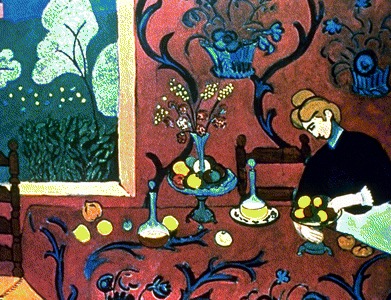
capsule
history of western art
The Capsule History of Western Art is a set of three tables consisting of
and interrelating artists, their works, and the art movements whose
principles the works embrace and incorporate.
Visit the Capsule history of western art now
|
about the capsule history of western art
The purpose of the Capsule History is to provide a concise introduction and
orientation to Western art by identifying and interrelating prominent
or significant artists, their works, and movements extant in the Western
fine arts tradition. The goal is to relate artists who have
practiced in this tradition to their works, and to relate their works to the
arts movements that inspired them.
By no means is the Capsule History exhaustive; only the most prominent
and representative artists, works, and movements are included. Since the
purpose of the Capsule History is to orient visitors, The Muse Of Fine Arts believes that it will
accomplish its objective best if it remains at this level of detail.
The History's current scope is deliberately limited to painters, paintings,
and to movements that germinated paintings. The Muse Of Fine Arts will widen the
History's scope later by adding artists, works, and media such as sculpture,
photography, and architecture.
about the three tables
The Capsule History of Western Art is comprised of three interrelated tables:
1) the Works Table, 2) the Art Movements Table, and 3) the Artists Table:
about the classification of artists, art movements, and their works
In the arts, a movement is a diffusely organized or heterogeneous group
of people or organizations tending toward or favoring a generalized common
goal or set of principles. Relating artists, works, and movements is a
classification process in which an artist or work is judged to be
representative of or to belong to this abstraction.
More
the Fine Arts Glossary
The Muse Of Fine Arts is pleased to offer this automated glossary of fine
arts terminology. It's a bounty of basic
information about the fine arts which it presents in a simple, direct, and
clear manner. It contains over 500 important terms drawn
from a variety of the fine arts, with definitions that are packed with
interesting and informative content.
- First visit the page called the Fine Arts Glossary, where the glossary
is explained. From there, visit the Glossary and look up fine arts words
'til you bust!
click here.
technical aspects of the fine arts
In their classical definition, the fields of fine art are primarily
visual; they include painting, sculpture, drawing, watercolor,
graphics, and architecture. Yet today there are more kinds
of fine art than every before, many of which mitigate or completely
dissolve barriers that in the past restricted the sensory appeal of
fine art to the eyes at the expense of the other four senses.
- Learn more! Explore the fine arts from a technical point of view:
click here.
ETAF Recommends
...Coming.


